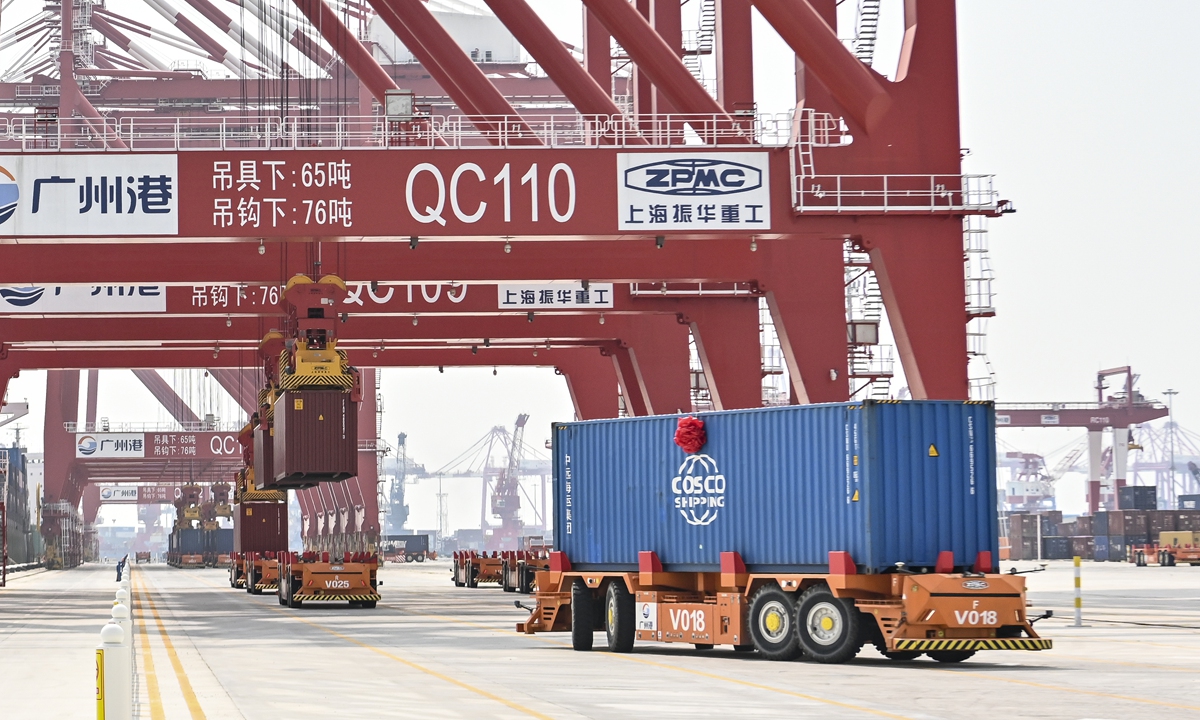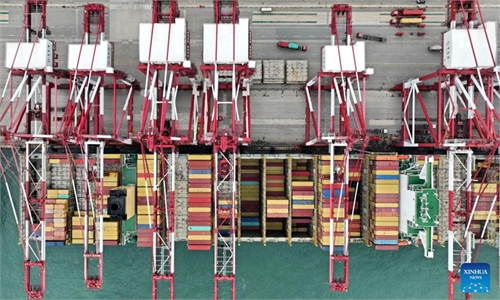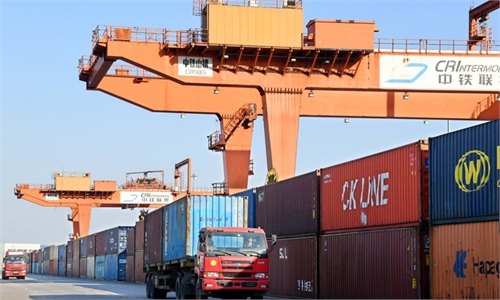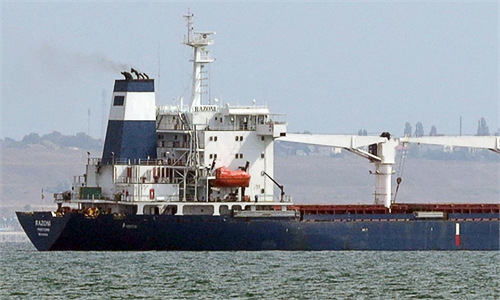
The world's first fully automated river-sea-railway multimodal port goes into operation in Guangzhou, South China's Guangdong Province, on July 28, 2022. It has a designed annual throughput of 4.9 million standard containers, and it uses the BeiDou Navigation Satellite System, 5G, artificial intelligence, autonomous driving and other technologies. Photo: IC
The container throughput of eight Chinese coastal hub ports increased 26.8 percent year-on-year in the last 10 days of July, with the foreign trade business showing strong growth of 29.3 percent, while domestic trade business expanded by 19.3 percent, industry data showed on Thursday.
The improved activities at ports, along with some other indicators, suggest that China's foreign trade continues on a solid recovery trend, though challenges linger, notably expectations of weakening external demand, trade experts noted.
In terms of individual ports, container throughput surged 69 percent in Dalian Port, 54 percent in Shanghai port and 68 percent in Ningbo-Zhoushan Port, according to data on the website of the China Ports & Harbors Association.
Ningbo-Zhoushan Port said on Wednesday that its container throughput stood at about 3.87 million standard containers, a year-on-year increase of 23.6 percent, with bulk cargo throughput of about 86.88 million tons, up 16.3 percent.
Based on preliminary statistics, Shanghai Port handled about 4.3 million standard containers in July, a new high for the month compared with previous years, the port said via its WeChat account on Monday.
Among China's 10 major ports, eight recorded growth in cargo throughput in the first half of the year, with Ningbo-Zhoushan ranking first, according to media reports.
Airports also saw a rapid recovery in handling cargo. For instance, Guangzhou Baiyun International Airport handled 720,000 tons of import and export cargo in the first half, with the value of foreign trade exceeding 190 billion yuan ($28 billion), up 19 percent year-on-year, media reports said, citing local customs.
After a 9.4-percent year-on-year gain in the first six months, China's foreign trade in the second half of the year is maintaining growth momentum, Bai Ming, deputy director of the international market research institute at the Chinese Academy of International Trade and Economic Cooperation, told the Global Times on Thursday.
Behind the growth momentum are several positive factors, including government policies easing enterprises' pressure, declining international shipping rates and a foreign exchange rate that has reversed the appreciation trend seen at the beginning of the year, Bai said.
With the Regional Comprehensive Economic Partnership taking effect, China and ASEAN, which are each other's largest trading partners, expect growing trade, Bai noted.
In the first half of the year, trade between China and ASEAN totaled $458.55 billion, up 11 percent year-on-year. The newly launched China-Laos railway has delivered over 6 million tons of cargo since it was put into operation last December, with 1 million cross-border shipments.
Yet, challenges remain for the rest of the year, such as possible weaker external demand given that the US is facing recession risks, and both the US and Europe have entered an interest rate hike cycle, Bai said.
Global Times



